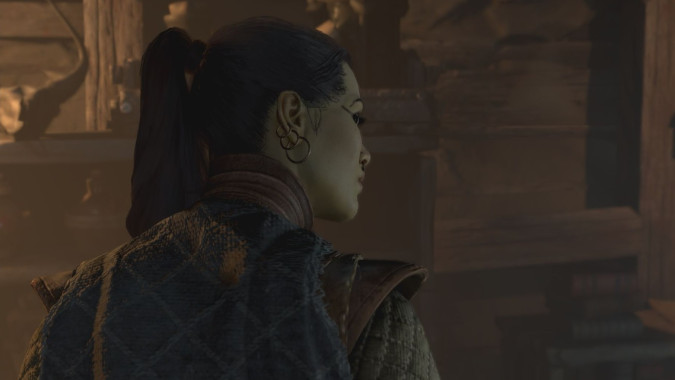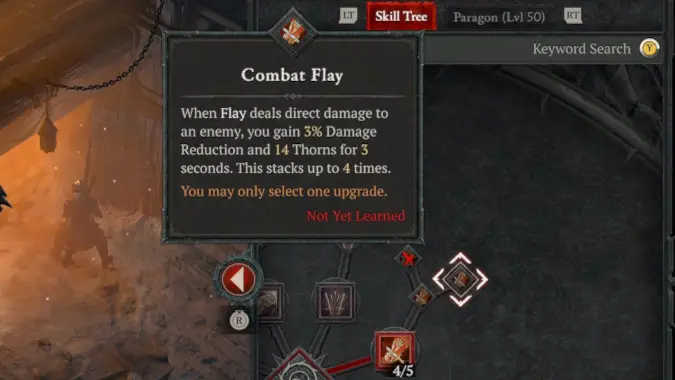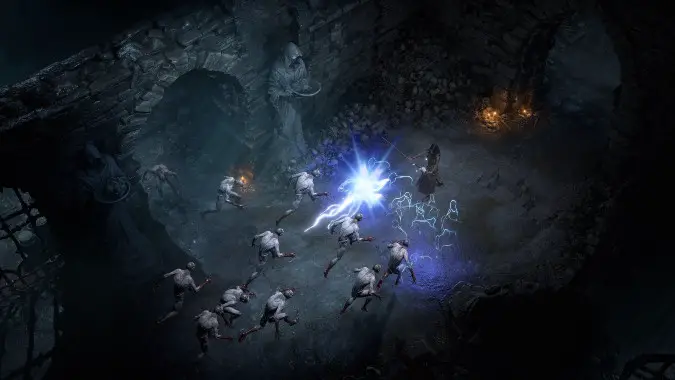A beginner’s guide to playing Diablo 4

Despite its hardcore reputation for both gameplay and gore, playing Diablo 4 as a beginner is less complicated than it seems. While there are certainly challenges to the Demon-haunted world of Sanctuary, it’s still a heck of a lot of fun to play no matter your experience or skill level.
During the Open Access/Beta period as well as the recent Server Slam, I’ve leveled several characters to the maximum level allowed — 25 for the first weekends and 20 for the second. If I had to boil down what I learned from the experience, I’d start with the following basics if you’re completely new to the series.
- Don’t be overwhelmed. Looking at the various talent calculators, it’s easy to feel like the game is daunting in terms of talents and skills. But remember, some tiers of the talent tree aren’t available until you’ve spent enough points to unlock them, so at start you really only have a few options and they expand as you go.
- Keep your gear as current as possible. This doesn’t always mean switching gear as soon as a higher item power piece drops, however — a pair of boots with lower armor but a variety of powers will likely be worth keeping even if a new drop has higher armor.
- Don’t forget you have skills to purchase. As you level up, it can be easy to forget to stop and spend those points for new abilities and/or higher ranks in abilities you already have.
- Anything is better than nothing. If you have an empty gear slot and a piece drops for that slot, wear it. Replace it when you get better, but until you do, a ring with elemental resistance is better than an empty ring slot.
- Remember the upgrade system. The Blacksmith can upgrade gear you’re wearing, using materials and gold you gain as you level up. I’d personally only upgrade rare or legendary items.
- Consider buying defensive options. For example, Storm Strike — one of the Druid Basic skills — has a chance to immobilize everything it hits for 2.5 seconds when properly talented. Picking talents and abilities that can give you this kind of breathing room can help a great deal if you’re struggling.
- Conversely, sometimes the best defense is hitting harder.
So let’s talk about playing Diablo 4.

Skill Trees are the cause of, and solution to, a lot of your early game problems
Skill Trees are a mechanic you’ll be introduced to almost immediately, and they will shape your play more than you might realize. Each class has a tree comprised of Basic Skills, Core Skills, and Defensive Skills. Once you spend enough skill points you can move down into more class-specific Skill options, but for the first 20 to 30 levels, you’ll likely be focusing mostly on those three types of skills.
Basic Skills are exactly what they sound like — the most fundamental and, well, basic of your options in combat. These are the moves that let you generate your class resource, whether it’s the Fury of the Barbarian or the Combo Points of the Rogue.
You could buy multiple Basic skills if you want to, but I don’t recommend it. Pick one of the four, choose one of the two available end modifiers for that ability, and then head down the tree for Core and Defensive skills as soon as you can. If you make a mistake with your Skill Tree, it can be fixed. Whether you accidentally spent a point in an ability you don’t want, or if you decide you want to try a completely different playstyle, you can respec your character both point by point or by blowing away the whole Tree and starting fresh, which gets more expensive as you level.
My advice is to pick a Basic skill that serves as a solid opener, and unlock one of the two exclusive options that customize it fully, and then head over to Core and get something that complements your preferred gameplay style. Maybe your Druid wants Storm Strike for your Basic skill, but then decides to switch gears and goes for a Pulverize build that reduces the damage of everything hit by Pulverize. That way, your big Pulverize strikes serve to debuff your enemies and your Storm Strikes immobilize them, and you’re literally making your character harder to hurt by hitting as many enemies as you can as hard as you can.
Follow it up with a Defensive skill like Blood Howl for a pocket Self Heal that can be talented to buff your attack speed, or Debilitating Roar which debuffs enemies and can also be talented to heal you, and you’re simultaneously increasing combat options and coping with incoming damage. Making choices that work together in this way is the biggest metagame option of the first 20 to 30 levels of Diablo 4.

Diablo 4 is the ARPG of not standing in things
Combat in Diablo 4 has different cadences depending on the enemies you’re fighting. Most mobs at or around your own level can be dispatched with relative ease. Elite mobs or mobs a few levels above you may require a bit more tactical thinking and/or the use of a potion charge (you start with four and get more at various levels as you level up) but it’s still the same basic idea.
But boss mobs and special encounters can be a whole different animal. The end boss of a dungeon or quest is often significantly harder to kill, with a much larger health pool than anything else you’re likely to encounter. More importantly, they usually have unique damaging abilities that you will not be likely to simply potion or defensive ability your way through. It feels a bit like old World of Warcraft bosses — when fighting an end boss, especially at levels from 10 to 25 or so, it pays to pay attention and get out of the way when you see circles on the ground.
Learn the Evade button and when to use it. This is possibly the most important advice I can give any player in Diablo 4. A clutch Evade is the difference between winning and losing a tough boss fight. You do not want to make the mistake of using Evade before you’re going to need it — using it to get away from some mobs hitting you is going to cost you big when three circles of poison appear on the ground and you’re standing right in them.
There are other things that are generally good advice for all players — figuring out the Codex of Power, make sure to harvest the various nodes of ores and plants needed for gear upgrades and elixirs — but this is enough advice to get you started when Diablo 4 comes out.
Please consider supporting our Patreon!
Join the Discussion
Blizzard Watch is a safe space for all readers. By leaving comments on this site you agree to follow our commenting and community guidelines.
 @MatthewWRossi
@MatthewWRossi



